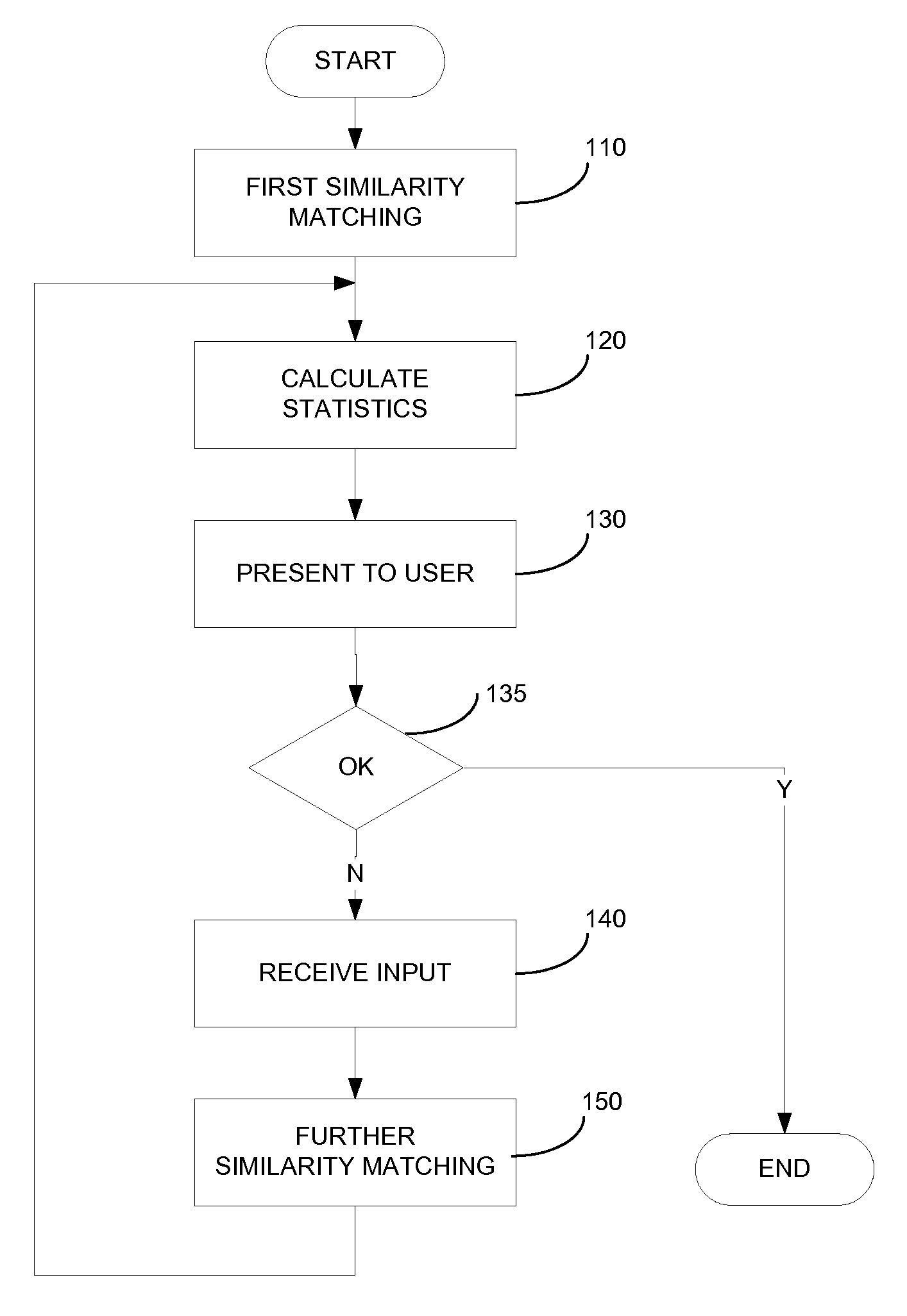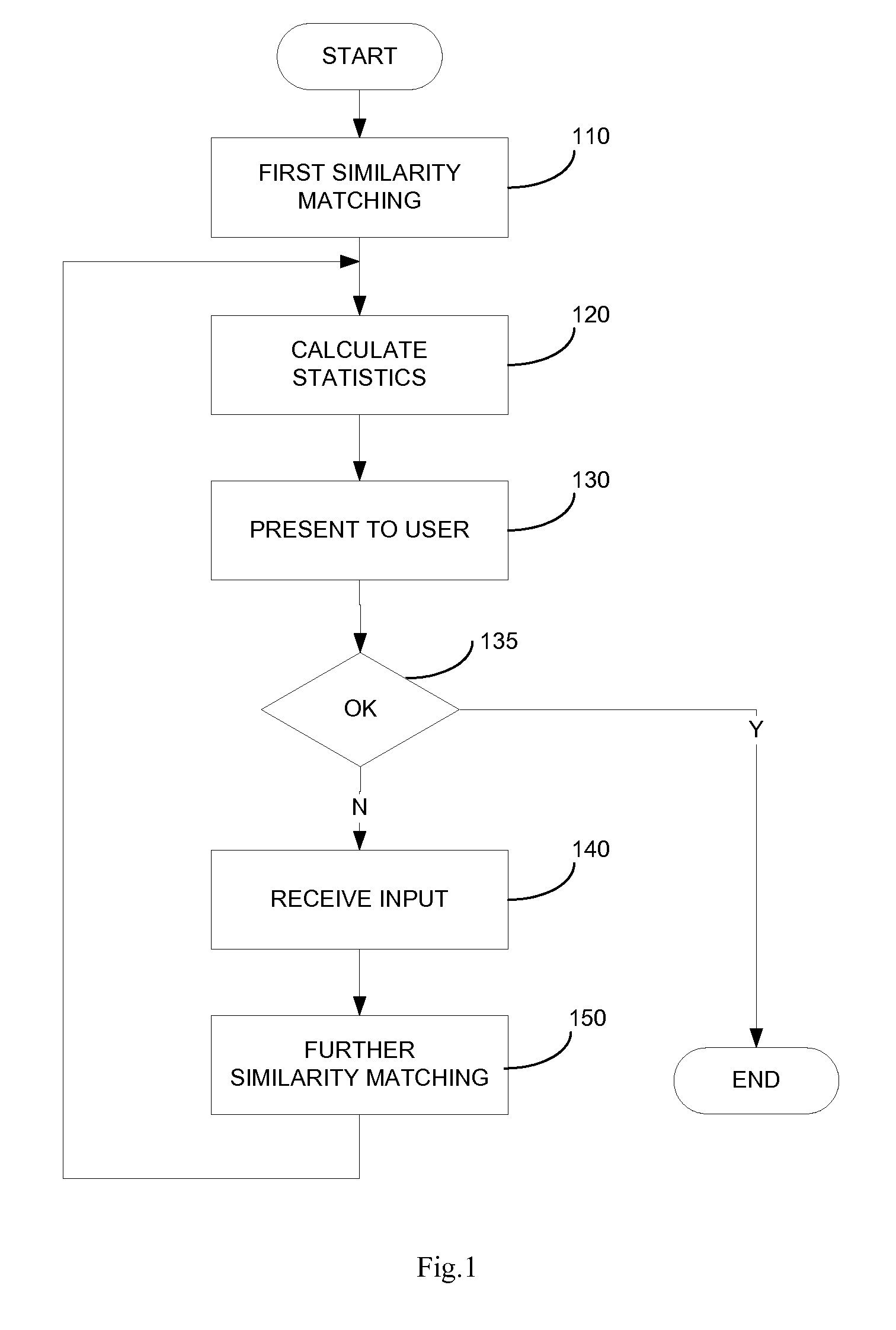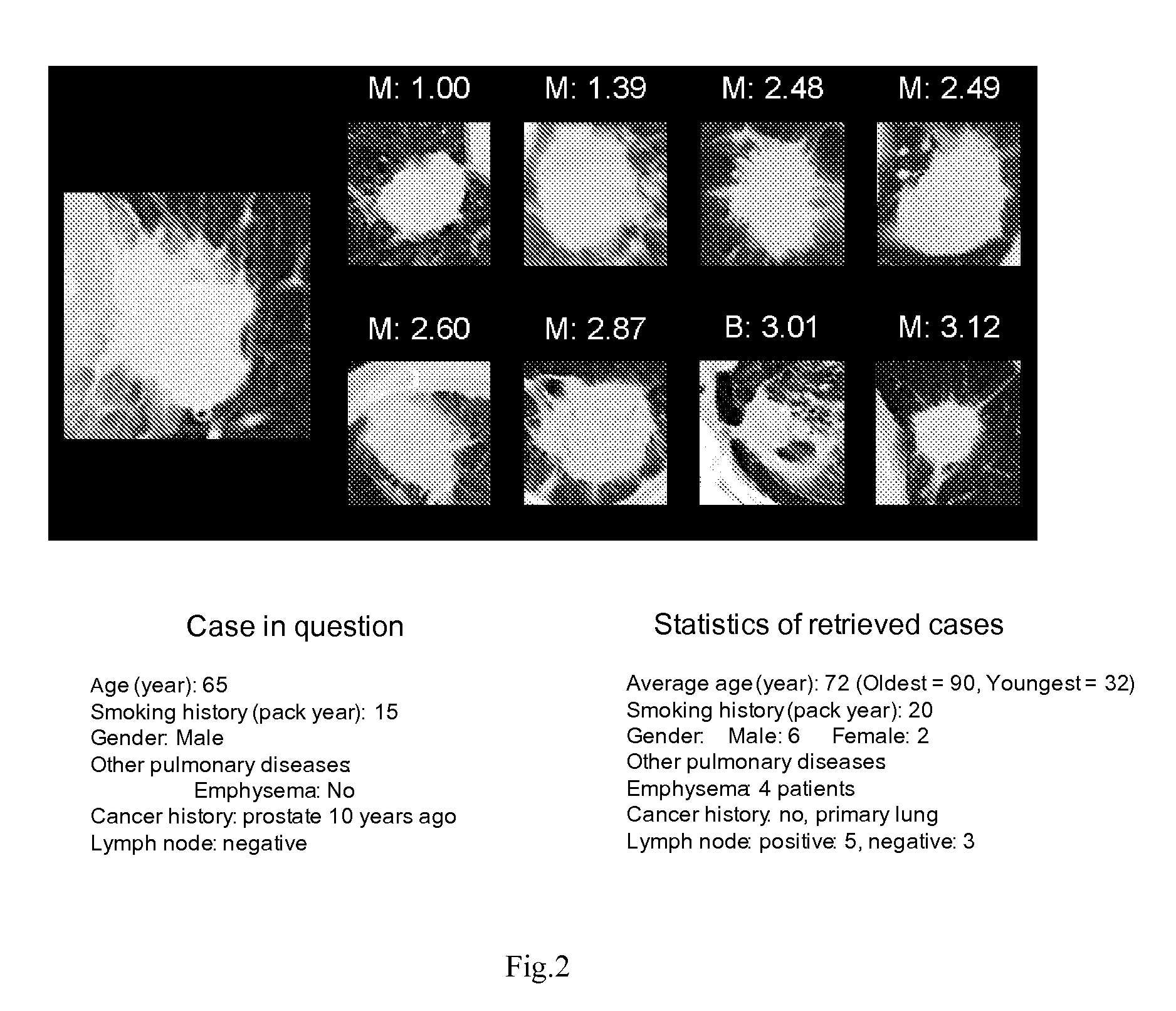Method and apparatus for refining similar case search
- Summary
- Abstract
- Description
- Claims
- Application Information
AI Technical Summary
Benefits of technology
Problems solved by technology
Method used
Image
Examples
Embodiment Construction
[0037]FIG. 1 is a flowchart showing an exemplary embodiment of a method, in accordance with the invention, for retrieving cases from a database.
[0038]Referring to FIG. 1, the process of the method starts from a first step 110 of performing similarity matching between an input case and cases in the database by using a first matching criterion, to identify a set of cases similar to said input case. This step is carried out as an initial search for retrieving cases from the database.
[0039]The first matching criterion used for similarity matching may include image-based features, which are derived from images of a medical subject. These features may include, for instance, shape of a tumor, texture of the tumor, and size change of the tumor due to treatment in case scans over time, etc. Alternatively, the first matching criterion may include non-image-based features, which are derived from clinical information, for instance relevant previous or current diseases, lifestyle facts, genetic ...
PUM
 Login to View More
Login to View More Abstract
Description
Claims
Application Information
 Login to View More
Login to View More - R&D
- Intellectual Property
- Life Sciences
- Materials
- Tech Scout
- Unparalleled Data Quality
- Higher Quality Content
- 60% Fewer Hallucinations
Browse by: Latest US Patents, China's latest patents, Technical Efficacy Thesaurus, Application Domain, Technology Topic, Popular Technical Reports.
© 2025 PatSnap. All rights reserved.Legal|Privacy policy|Modern Slavery Act Transparency Statement|Sitemap|About US| Contact US: help@patsnap.com



